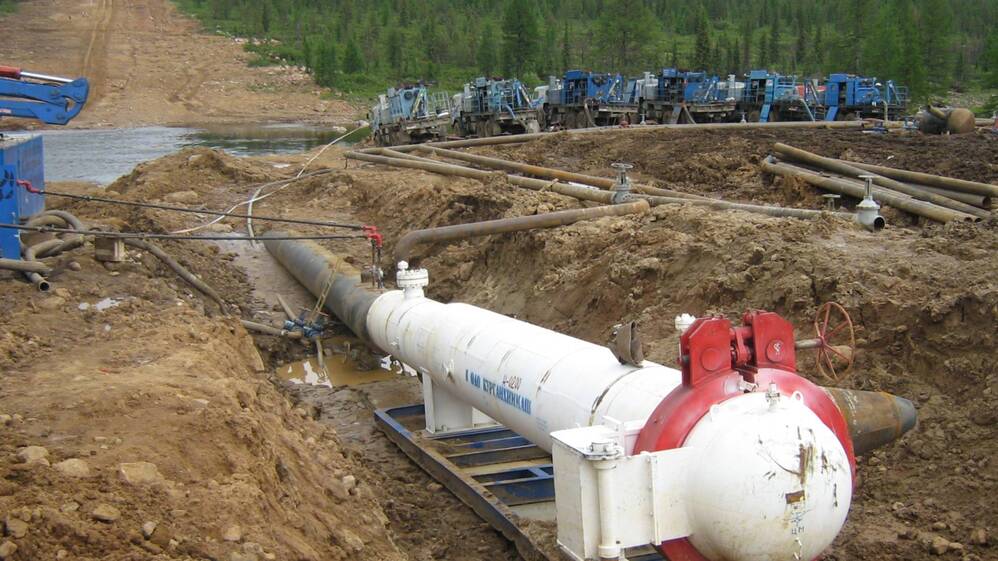What Is East Siberia Pacific Ocean (ESPO)?
The East Siberia Pacific Ocean ESPO is a premium grade Russian crude oil known for its low sulfur content and high quality. This crude is transported via the ESPO pipeline, which connects Eastern Siberian oil fields to the Pacific Ocean. The company IranPetroExport energy trading profile actively tracks trends in ESPO crude pricing due to its growing importance in Asia-Pacific oil trading. With its strategic routing and desirable specifications, East Siberia Pacific Ocean ESPO is gaining more attention from energy importers worldwide.
Key Features and Specifications of ESPO Crude
East Siberia Pacific Ocean ESPO crude is widely appreciated for its chemical properties and commercial advantages. In this section, we break down the key features that define ESPO oil:
- Low sulfur content
- High API gravity
- Shorter shipping time to Asia
- Competitive pricing structure
- High demand in Asia
Low sulfur content
The East Siberia Pacific Ocean ESPO crude is classified as a sweet crude due to its low sulfur content, making it easier and cheaper to refine. For comparison with other grades, visit the crude oil insights page.
High API gravity
One major advantage of East Siberia Pacific Ocean ESPO is its relatively high API gravity, indicating a lighter crude that yields more high-value products like gasoline.
Shorter shipping time to Asia
Due to its proximity to the Pacific coast, East Siberia Pacific Ocean ESPO reaches Asian markets faster than Middle Eastern or European oil, offering time and cost efficiency.
Competitive pricing structure
East Siberia Pacific Ocean ESPO often trades at favorable prices compared to Brent or WTI, making it attractive to price-sensitive importers.
High demand in Asia
Asian countries like China, South Korea, and Japan are major buyers of East Siberia Pacific Ocean ESPO, driven by both its price and quality.

ESPO Pipeline Route: From East Siberia to the Pacific Ocean
The East Siberia Pacific Ocean ESPO pipeline spans over 4,000 kilometers from Tayshet in Eastern Siberia to Kozmino port on the Pacific Ocean. This route strategically reduces Russia's dependency on European markets and strengthens energy ties with Asia.
Tayshet: The Starting Point
Tayshet serves as the beginning of the East Siberia Pacific Ocean ESPO pipeline, located deep in Russia’s Irkutsk region.
Skovorodino: The Distribution Hub
Skovorodino acts as a midpoint terminal where the ESPO pipeline splits to serve both China and the Pacific coast, aiding in distribution flexibility.
Kozmino Port: The Export Gateway
The Kozmino oil terminal is the final point of the East Siberia Pacific Ocean ESPO route, allowing seaborne exports to Asian destinations.
Major Buyers and Global Market for ESPO Crude
The East Siberia Pacific Ocean ESPO crude is a staple in the Asian oil market. Countries like China, South Korea, and Japan regularly import this grade due to its refinery-friendly composition. Its availability through Kozmino also attracts spot market buyers who prefer flexible logistics. As global energy dynamics shift, East Siberia Pacific Ocean ESPO continues to secure a growing share in oil import strategies.
China
As the largest importer of East Siberia Pacific Ocean ESPO, China benefits from both long-term contracts and spot deals.
Japan
Japanese refiners prefer East Siberia Pacific Ocean ESPO for its light characteristics and proximity.
South Korea
Korean energy companies buy East Siberia Pacific Ocean ESPO regularly, optimizing their operations with quicker delivery times.
Differences Between ESPO and Other Russian Crude Oils
While all Russian crude types are key to the global market, East Siberia Pacific Ocean ESPO has unique features. It differs in sulfur level, delivery time, and pricing approach. Below is a comparison chart highlighting major distinctions. For a comparable Russian export blend, explore the REBCO crude oil overview.
Feature | ESPO | Urals | Sokol |
| Sulfur | Low | Medium | Low |
| API Gravity | High | Medium | High |
| Export Point | Kozmino | Black Sea / Baltic | De-Kastri |
| Main Buyers | China, Japan, Korea | Europe, India | Japan, Korea |
| Delivery Time to Asia | Fast | Slow | Moderate |
Future Outlook for East Siberia Pacific Ocean ESPO Exports
- Increased demand in Southeast Asia
- Shift away from European markets
- Investment in pipeline expansion
- Greater reliance on spot markets
- Impact of global oil sanctions
- Increased demand in Southeast Asia
As regional economies grow, Southeast Asia is expected to import more East Siberia Pacific Ocean ESPO, especially nations like Vietnam and Thailand.
- Shift away from European markets
With geopolitical tensions rising, Russia is pivoting to Asia, making East Siberia Pacific Ocean ESPO more central to its export policy.
- Investment in pipeline expansion
Future developments may increase capacity of the East Siberia Pacific Ocean ESPO line, improving volume and logistics.
- Greater reliance on spot markets
Spot trading of East Siberia Pacific Ocean ESPO gives flexibility to buyers, offering alternatives to long-term contracts.
- Impact of global oil sanctions
Sanctions may reshape the global flow of East Siberia Pacific Ocean ESPO, pushing Russia to form stronger ties with non-Western buyers.
Conclusion
The rise of East Siberia Pacific Ocean ESPO as a leading crude oil type reflects shifting dynamics in global energy trade. With proximity to Asian markets, favorable refining traits, and support from IranPetroExport’s expert energy team, ESPO is set to remain a key player in regional and global oil supply for years to come. For a deeper understanding of related products like fuel oil, visit the Fuel Oil Uses and Benefits Guide.
